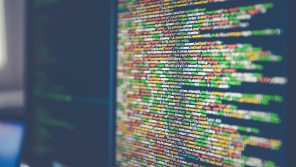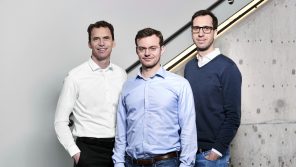This is a new post in a whole series on the Legal Tech Blog, dedicated to interesting books for those, who would like to understand where the legal industry might be heading and which forces might drive changes. All books presented in this series will explain why legal service providers will work differently in the future. This time the book “Tomorrow’s Lawyers” by Richard Susskind will be presented. Please enjoy.
The legal market is changing rapidly, in part due to legal tech. In his slim, stand-alone and conversational style book “Tomorrow’s Lawyers: An Introduction to Your Future” Susskind lays out the case why the legal market is in a period of accelerating change, driven by technology, client demand and liberalization of the legal provider market. One of the core ideas in this book is the migration from bespoke to commodity work. In his book, Susskind analyzes the evolution of legal services, notably the decomposition of work into different functions, that are delivered in different ways, including outsourcing and automation. Additionally, he outlines how law firms are using legal tech to realize two key strategies for success – efficiency and collaboration. He concludes, that although there will be fewer traditional roles and employers for lawyers, new ones will surface. The book was first published in 2013 and it is a long-running bestseller. This book (or, at least, this summary) is a must-read for anyone, who is in management in the legal market and for all those, who want to learn about the impact that legal tech is going to have on their careers.
Susskind has a first class honors degree in law from the University of Glasgow and a doctorate in law and computers from Balliol College, Oxford. He is an author, speaker and independent adviser to international firms and national governments as well as the president of the Society for Computers and Law in the United Kingdom, IT Adviser to the Lord Chief Justice of England and Wales, and Chair of the Advisory Board of the Oxford Internet Institute. Additionally, he holds professorships at the University of Oxford, Gresham College and Strathclyde University.
Susskind authored several books in the area of legal tech. Other considerable books are the textbook style “The End of Lawyers?: Rethinking the Nature of Legal Services” (2008) in which he continued to lay the groundwork for his now more optimistic message and the more general on all knowledge experts focused “The Future of Professions: How Technology Will Transform the Work of Human Experts” (2015) which was co-authored by his son Daniel Susskind. His work has been translated into 10 languages.
Introduction
“Tomorrow’s Lawyers” starts off with a well-known quote of the inventor Alexander Graham Bell, who said, that “when one door closes, another door opens, but we often look so long and so regretfully upon the closed door, that we do not see the one which has opened for us”. The book is dedicated to pointing lawyers to the new and open door on the legal market.
Just as other professions are undergoing massive upheaval, this is bound to happen in law. In fact, it is already happening. The bespoke specialist, creating handcrafted solutions for clients, will be challenged by new working methods, characterized by lower labor costs, mass customization, recyclable legal knowledge, pervasive use of IT, and much more. His hope is, that readers will not respond defensively and ask how they can stop this from happening, but rather that they will find exciting new options and opportunities in his message and want to be one of the pioneers.
The book is divided into three major parts. The first is an updated, simplified restatement of Susskind’s views on the future of legal services, as presented in his previous books. He picks out and highlights the key themes of his books. He introduces the the main drivers of change in the legal market and explains why and how this will push lawyers to work differently and will encourage new providers to enter the market with novel approaches to legal services. He also outlines a large range of technologies, that he believes have the potential to disrupt the traditional working practices of lawyers. His focus throughout the book is largely, but not exclusively, on civil work in commercial law firms.
In Part Two, he sketches out the new legal landscape, as he expects it to become. He discusses the future for law firms, the challenges facing in-house lawyers, and the likely progression of the shifts he anticipates. He also lays out some of the ways in which the access to justice problem will be overcome through a variety of online legal services.
In the third part of the book, he focuses more specifically on the prospects for young lawyers. He poses the question what kind of new jobs and employers will emerge and for what the next generation of lawyers will actually have to be trained. In addition, he equips young lawyers with penetrating questions to put to their current and prospective employers.
Ultimately, Susskind wants to prevent young lawyers from making the mistake of going where the market used to be, instead of where it is most likely to end up in the near future.
Part One – Radical Changes in the Legal Market
Three Drivers of Change. The legal market is in an unprecedented state of flux. Over the next two decades, Susskind predicts, the way in which lawyers work will change radically. Entirely new ways of delivering legal services will emerge, and new providers will enter the market. Susskind believes, there are three main drivers of his change:
• The “more-for-less”-challenge
• liberalization
• information technology
Regarding the “more-for-less”-challenge, he argues, that a wide range of clients, from in-house lawyers and managers to individual citizens, are not able to afford traditionally delivered legal services. He calls this problem the “more-for-less”-challenge – law firms will have to deliver more legal services at lower costs. Although this assumption is comprehensible, it is not uncontested.
The second main driver of change, in his opinion, is liberalization. The closed community of legal specialists does not seem to offer sufficient choice to the consumer. For decades, this has led critics and reformers to claim that the legal profession is an unjustifiable monopoly and that its practices are restrictive and anti-competitive. In turn, many have campaigned for a relaxation of the laws and regulations, that govern who is allowed to offer legal services. This call was heard to a different degree in a lot of countries all over the world. Today, investors, entrepreneurs and high street brands together are recognizing, that the legal market is far from efficient and that there are great opportunities for offering legal services in new, less costly, more client-friendly ways.
These new players are not committed to traditional ways of working. They do not believe, for example, that all legal work needs to be undertaken by expensive lawyers working in expensive buildings in expensive city centers. They are passionate about change, and they are often better business managers than most lawyers, who tend to have had little training in the actual running of commercial entities. In short, market forces are sweeping through the legal profession and these will bring intense and new competitive pressures for traditional law firms.
The third main driver is the ubiquitous information technology. One key challenge for the legal profession is to adopt new systems, to identify and to grasp the opportunities afforded by emerging technologies. Yet at the same time, though, many of these innovative technologies are disruptive. This means they do not support and sit happily alongside traditional ways of working. Instead they fundamentally challenge and change conventional habits.
In summary, Susskind suggests, that the “more-for-less”-challenge, the liberalization, and legal tech will drive immense and irreversible change in the way that lawyers work.
Strategies for Success. The three drivers of change are urging law firm leaders around the world to contemplate on opportunities and threats, that the legal market has had little reason to confront in the past. One might think, that the best way to meet the “more-for-less”-challenge would be for law firms to charge less and although this approach is normally not greeted with unbridled enthusiasm, law firms like to show willingness and many have recently been proposing alternative fee arrangements to their clients.
The alternative, that lawyers have in mind, when they talk about alternative fee arrangements, is to hourly billing. In truth, hourly billing is not simply a way of pricing and billing legal work, it is a mindset and a way of life. Today, lawyers charge for their time – for their input and not their output. All too often, the number of hours spent on a case by a law firm bears little relation to the value that is brought. Therefore, many law firms recently have sought to meet clients’ demands for lower fees by proposing methods of charging that are not time-based.
In Susskind’s view, there are only two viable strategies available to the legal world to help it cope with the “more-for-less”-challenge. He calls these the efficiency strategy and the collaboration strategy. In short, the efficiency strategy maintains, that lawyers must find ways of cutting the costs of legal service, while the collaboration strategy suggests, that clients should come together and share the costs of certain forms of legal services. The efficiency strategy, in his opinion, is likely to be favored over the next years, whereas the collaboration strategy will come to dominate in the long run.
Commoditizing the Law. Central to the efficiency and collaboration strategies and also to the general idea of working differently, is a term that is vile and yet vital – that of commoditization. Commoditized legal work is often distinguished from what can be termed as bespoke legal work. Bespoke work is handmade, handcrafted, and put together for one individual alone, whereas for commoditized work mass customization techniques are employed. But this binary distinction between bespoke and commoditized legal work is a false dichotomy. Legal services are in fact evolving through five different stages, which he refers to as bespoke, standardized, systematized, packaged, and commoditized.
To be sure, and he stresses this, difficult problems do arise, that undoubtedly require bespoke attention, but far more frequently, lawyers are asked to tackle problems which bear a strong similarity to those they have faced in the past. Clients most often have no interest in paying for the re-invention of the wheel.
Susskind suggests, that some legal work will evolve even further and become entirely commoditized, by which he means readily available at no or low cost on the Internet, as a form of online legal service. Whereas many lawyers confuse standardization with commoditization, he believes the latter is most usefully confined to refer to legal work, that is so commonplace and routinizable, that it can be made available, in open-source spirit, on the Internet. He acknowledges, that lawyers will not benefit commercially from the commoditization of legal services in this sense, but he urges, that commoditization will be fundamental in radically increasing access to justice for those, who currently cannot afford legal services.
Working Differently. No matter how small or large a deal or a dispute is, it is always possible to break it down, to decompose the work into a set of constituent tasks. And it is in respect of each of these tasks, not of the job as a whole, that one can ask: what is the most efficient way of undertaking this work, and to which of the five categories (bespoke, standardized, systematized, packaged, and commoditized) should the tasks be allocated. None of this is to betray quality. Rather, his claim is, that there are ways of undertaking individual legal tasks, that will deliver quality as high as conventional legal services and sometimes even higher, but at far lower cost.
Lawyers are uniquely qualified to undertake the tasks of strategy, tactics and advocacy. And for these tasks, clients will continue to seek the direct advice and guidance of skilled lawyers. However, alternative service providers can now take on remaining tasks, such as document review, legal research, project management, litigation support, and negotiation, at lower cost and to higher quality than traditional law firms.
In order to work differently, one must adopt one or more alternative ways of sourcing legal work. In this regard, Susskind identifies 15 ways of sourcing legal work, from de-lawyering and relocating, over subcontracting and co-sourcing, to off- and near-shoring. In contrasts, outsourcing of legal work entails in this context the conduct of legal work by third party providers. This is often referred to as legal process outsourcing (LPO). Although each of these techniques, if deployed in isolation, can provide powerful alternative ways of sourcing legal tasks, it is short sighted to view them as distinct options.
His thinking is, that, in the future, for any substantial piece of legal work, it will become common practice to decompose the matter in question into manageable tasks, to identify the most efficient way of sourcing each task, and to adopt the most efficient combination of the alternative approaches. This is what he calls multi-sourcing. In order to achieve this, lawyers may find it useful to apply production-line or manufacturing mentality and methodology to the delivery of legal services. In this model, one individual organization – a law firm or perhaps a new-look legal business – will likely take over all responsibility for the delivery of the completed, multi-sourced service.
Susskind accepts, that the circumstances of clients are never identical. But he does not concede, that human legal practitioners are needed during all stages across the life cycle of a legal project, even if the final output is tailored.
Disruptive Legal Technologies. In management theory, drawing on Clayton Christensen’s book, The Innovator’s Dilemma, a distinction is commonly drawn between sustaining and disruptive technologies. In broad terms, sustaining technologies are those, that support and enhance the way a business or a market currently operates. In contrast, disruptive technologies fundamentally challenge and change the functioning of a firm or a sector. Susskind claims, that there are several disruptive technologies in law already out there. He lists, among other things, automated document assembly, electronic legal marketplaces, legal open-sourcing, and embedded legal knowledge. Individually, these existing and emerging systems will challenge the way in which certain legal services are delivered. Collectively, they will transform the entire legal landscape.
Automated document assembly systems, for example, generate relatively polished and customized first drafts of documents, in response to questions asked of their users. This technology was already converted into a business model by legalzoom. This US-based company makes legal documents available to citizens and businesses, who cannot afford lawyers or simply wish to spend less on their legal issues. legalzoom has now served over two million customers and its brand is claimed to be better known in the US than that of any law firm. This business model has successfully been transferred to Germany by smartlaw.
Electronic legal marketplaces normally include online reputation systems, which allow clients to share their views on the performances of service of their lawyers; price comparison systems, which put the respective prices and rates of different legal advisers and law firms on simple websites; and online legal auctions suited to legal work packages, that are routine and repetitive. For lawyers, who used to rely on their clients not knowing what alternatives were open to them, these technologies are highly disruptive. This business model of an electronic legal marketplace is already online in Germany (123recht, Legalbase, Advocado, Jurato) in different forms.
Regarding legal open-sourcing, Susskind envisions sustained online mass collaboration in the field of law – a movement devoted to building up large quantities of public, community-oriented legal materials, such as standard documents, checklists, and flow charts.
After all, in the years to come, in many dimensions of our social and working lives, legal rules will be deeply embedded in our systems and processes. Consider a car, that warns its drivers and passengers, that the ignition will not work until a built-in breathalyzing test is used and passed. This would not require car users to know the precise details of the law and then exercise the option of applying the law. Instead, the law, that prohibits driving with excessive alcohol in the bloodstream, would be embedded into the car itself. In a world where the daily life of an average person is highly influenced by electronic devices, the embedding of legal rules can penetrate almost every aspect of human behavior.
To be continued.




